Vineyard pests and what to do about them
Vineyard pests: finding a balance
While many people associate the image of wild animals roaming amongst grapevines as a part of a romanticized and bucolic vineyard scene, if their density increases too much, their presence can quickly become a problem for vineyard managers and winemakers.
Not every animal is going to be causing you complications in the vineyard, and who knows, maybe you won’t have any issues at all and will find yourself living in perfect harmony with the animal kingdom surrounding you.
It’s a nice thought, but as you’ll soon learn if you haven’t already, there’s always going to be some kind of creature who just seems to be making your grape growing a lot more difficult than you had initially imagined it would be.
There are multiple kinds of pests you will encounter: mammals, insects, fungi, birds.
All of these can be our best friends or our worst enemies. As grape growers, we try to meet them somewhere in the middle, not over-encroaching on their needs, while still attempting to get a reasonable yield from the fruit you’ve spend an entire year growing.
While this list is by no means exhaustive (and is of course subjective, since wildlife differs dependent upon the location of your vineyard) it serves as a basic run-down on what pests you may encounter and how to approach the situation.
Mammals
Deer, bears, raccoons, gopher, moles, mice. While the larger mammals will go straight for the leaves and grapes, the smaller ones will enjoy chewing at the roots of the vines, which can be much more damaging. Though mole hills can be annoying to walk on, let’s not make a mountain out of them unless it’s really causing damage to the vineyard.
Birds of prey are a great way to keep this issue in check. Deer and bear really need a fence to be kept out of vineyards. There are also deer repellents like Deer Off and Liquid Fence that can be used.
Cute but damage-inducing vineyard visitors
Insects
Japanese beetles, lady bugs, grape berry moth, cane girdler, mealybug. While spraying for these insects is probably the quickest and most effective remedy, some vineyard managers employ the likes of worker ducks or chickens to help eat the insects as well as the larvae.
You may see Japanese beetle traps out in vineyards, which serve as a means of attracting the beetles to one location, entering a box into which they cannot escape. The jury seems to still be out as to whether this is the best means of trapping them or if the pheromones just serve to bring more of the beetles nearby.
Fungi
By far the most common fungal diseases you’ll encounter are powdery mildew, downy mildew, botrytis, black rot, and vine trunk diseases (esca). These can take hold very easily especially with the right weather and climactic conditions. Sprays are probably going to be your friend in these circumstances.
Birds
As you see, a lot of farm work and vineyard management is the recognition that this is all a balancing act. You don’t want to scare off all of the birds, lest you become overrun with rodents; but you also don’t want too many birds in the area that will start eating the berries.
In fact, eating the berries isn’t even the biggest issue here – the main problem caused by these birds is that as they peck into the grape, causing a hole, various diseases can take hold which then can proliferate. Try to support the presence of birds of prey in and around your vineyard, which will scare off these smaller birds. Most vineyards will use nets as a physical barrier to stop birds from reaching the berries, whereas others choose to use the likes of owl decoys, bird repellents, or noise producers (usually imitating a predatory bird call), Mylar balloons, or bird repellent scare tape.
We hope you don’t experience too many issues with vineyard pests, but it is bound to happen to everyone who decides to grow grapes – it just comes with the territory! As long as you stay on top of whatever issue arises, you should be good to go and on your way to restoring balance in the vineyard!
Hybrid grapes
Hybrid grapes are finally getting the attention they deserve!
Though some grape growers and winemakers (primarily in cooler northern regions) have been singing their praises for decades, hybrid grape varieties are finally beginning to receive the attention they deserve from the wine world at large.
What is a hybrid grape, exactly?
A hybrid grape is a crossing of two varieties of grapes that are different species.
Unless you go to local vineyards in cooler North American climates or actively seek out hybrid varieties, it’s likely you haven’t ever tried hybrid grapes. Some common varieties include Marquette, Baco Noir, Vignoles, St. Croix, Seyval, Frontenac, Marechal Foch, and Vidal blanc, among many many others. You may not have heard of them because the average wine consumer usually drinks Vitis vinifera varieties, which include any of the common grapes you most often hear of… Chardonnay, Cabernet Sauvignon, Riesling, Merlot, etc. You get the picture.
Hybrids are an intriguing and exciting group of grapes, bringing forth new aromas and flavors that set them apart from the average vinifera tasting notes.
What makes them special, or different than vinifera varieties?
Though still within the “Vitis” genus, the species varies – hybrids can be crosses of Vitis vinifera with Vitis riparia, labrusca, rotundifolia, etc. This means that as they crossbreed, the different species bring certain traits to the table which can of course be either beneficial or detrimental to a grape variety attempting to create quality wine.
Benefits
- Resistance to many grapevine diseases
- New, interesting traits (aromatics, taste, winemaking styles)
- Grow better in northern and humid climates
- Increasing public interest
- Easier to grow organically/with less intervention
Drawbacks
- Oftentimes higher acidity
- Low tannin producers
- Less known/recognized than vinifera wines
- Associated with “foxy” aromas
Hybrid wine making tips:
- Use sacrificial tannins during winemaking. Because hybrids are already low in tannin, take advantage of fermentation tannins during winemaking so the tannins within the skins don’t get used up, leaving you with an even lower tannin red wine.
- Be sure to check pH and TA before fermenting. You may need to use potassium bicarbonate to get the TA down to a manageable number. Plus, if you want the wine to undergo malolactic fermentation, the pH shouldn’t be too low anyway. Both of these numbers may need to be adjusted.
- Hybrids usually come from colder growing regions, so be ready to chapitalize your juice or must if necessary. Anything under 21-22 Brix is going to give you a low ABV.
- Don’t try and force a variety to be something it’s not. There are many positive attributes associated with each hybrid grape that’s out there – that’s why it exists! – so learn what it’s supposed to taste like, try some local producers, and do your best to demonstrate what the variety can do. There’s nothing worse than trying to force a Marquette, for instance, to taste just like a dark, jammy, fruit-bomb Napa Cabernet Sauvignon. You can however make a fantastic light bodied, beautifully colored wine with beautiful aromas of strawberry, raspberry, and spice. Learn about whatever variety you’re fermenting and take it from there!
Where to start when Adjusting and Balancing Must
There are two main steps to Adjusting and Balancing Must, which consist of adjusting your Brix and adjusting your pH/TA. We’ll cover what they are, what they mean, and how to do both.
Where to start when Adjusting and Balancing Must
Firstly, you’ll need your starting numbers. You’ll have to measure your Brix, pH, and TA. To measure your Brix, you can use a Triple Scale Hydrometer. To measure your pH and TA, you’ll need a titration setup or an acid test kit, and some mathematical skills. If I lost you at math skills, don’t fret – Musto Wine Grape Company offers a wide variety of testing including pH and TA testing!
What are Brix, pH, and TA?
Brix is a measurement of the sugar content within your must. This indicates the degree of the grapes’ ripeness at harvest. The higher the Brix, the higher the alcohol content in the finished wine. To get an alcohol conversion level, simply multiply your Brix by .55. pH is the measurement of the ripeness in relation to acidity. A low pH wine is crisp and tart, while higher pH wines are more prone to bacteria growth and spoilage (3.9 pH and higher). Wine generally falls between 3 or 4 on the pH scale, with 3 – 3.4 being the average for white wines and about 3.3 – 3.6 for reds. Finally, TA is measuring acidity by volume. TA stands for Total Acidity. Usually, the higher the pH the lower the TA and vise-versa. This is not always the case though, and you may need to make adjustments to your must. Hold tight, how to do that is next!
How to Adjust and Balance Must
If you need to lower your TA, we recommend using Potassium Bicarbonate. Adding Potassium Bicarbonate to your must will reduce acidity. Make sure to add slowly, as it foams significantly. It is also recommended to add to water first, then add the mixture to your must. Under typical conditions and normal use, Potassium Bicarbonate neutralizes Tartaric Acid. It’s best used when the TA is high and pH is low, due to the fact it causes an increase in pH. It also adds potassium to the must and that requires cold stabilization. Potassium Bicarbonate can contribute to tartrate instability in wine, which is also why cold stabilization is recommended. It is also good to note that the addition of Potassium Bicarbonate will cause a reaction in the wine which will vary from wine to wine and the pH will not shift in a predictable manner. Bench trials should always be done first when attempting to adjust pH.
To lower pH, the most effective method is to add Tartaric Acid. If both TA and pH are too high, tackle the pH. The pH is more critical to the wine chemistry. This addition also requires bench testing to find the best addition.
To raise the brix, we can add table sugar to the must, be sure to dilute the sugar first with hot spring water before adding it to the must or juice. There are good formulas available to calculate sugar required based on the brix you are trying to achieve.
To lower the brix, we will add spring water to the must to “dilute” the high sugar content in the must or juice. Just beware there is a limit on how much water you can add to a must or juice before you reduce the wine quality. There are also good formulas for this adjustment too.
For exact measurements and instructions, follow the directions on the manufacturer’s packaging, contact a winemaker at Musto Wine Grape Company for assistance, or download our Full Class offering at WinemakingInstructions.com.
We’re here to help when you need it
As stated above, Musto Wine Grape offers a variety of products as well as services including testing and support. Email winemaker@juicegrape.com or call (877) 812 – 1137 to speak with someone who can assist you.
What is Cold Soaking?
Cold soaking, also known as pre-fermentation maceration, is a winemaking technique that is widely used in the production of red wines. It involves holding crushed red grapes at a low temperature and takes place before fermentation.
Why should I be cold soaking?
Cold soaking red grapes such as Pinot Noir, Cabernet Sauvignon, Merlot, and more has many benefits. The aim of a cold soak is to extract more aromas, aroma intensity, and color from the skins of the grapes. In red wines, it makes for a more intensely fruity and deeper-colored wine; but it also makes for a fuller wine with increased palate weight. For example, in Pinot Noir, cold-soaking extracts the softer, more supple tannins to help produce a silky mouthfeel. It also helps emphasize the lush fruit notes like dark cherry and plum. Yum!
But wait; there’s more: Firstly, time in a cold soak, even a brief one, lets a winemaker get a much better handle on the fruit at hand, enough time to get a tank thoroughly mixed, time for any raisins in the fruit to reveal their sugars, time to get more trustworthy readings on basic wine chemistry than the numbers grabbed in the rush of fruit delivery. And second, extracting some goodies early in the cycle leaves open the option of pressing slightly early and working off the last few Brix in barrel, again minimizing the influence of nasty seed tannin.
How do I do it?
It is important to maintain a chilled temperature because if the must gets too warm it can begin fermenting. To properly cold soak, you need to maintain a temperature of about 35-45 degrees Fahrenheit. This could be difficult for home winemakers without a chiller system. Try using dry ice or ice tubes ser in the wine to the wine as cold as you can. Remember, the point of the low temperature is to be sure the yeast cannot get started.
This is usually done for about 5 days, though the length of time varies according to the winemaker’s goals and the grape variety. You should add enzymes to help the extraction move along, and sulfur dioxide to inhibit unwanted microbial activity. Using inert gas to prevent oxidation is also a great idea. Inert gases, known as carbon dioxide, nitrogen, and argon are necessary for winemaking. They are used to supplant air in places where air could come into contact with the wine.
Need help with cold soaking your grapes?
Musto Wine Grape Company is here to help. Give us a call at (877) 812-1137 to speak with one of Musto’s Crush Crew members. We’re here to provide you with the best quality wine grapes, juices, and equipment, as well as the support to ensure you are successful in making the wine of your dreams!
Wine Spotlight: Amorosso/Amarone Blend
One of our all time favorite Italian wine juices will be arriving in October, the Amorrosso/Amarone Blend. Sweet and bold, this wine is popular at any table. It will be arriving in early October from Italy. The Amarone fresh juice is available for pre-order and on demand pick up. The Amorosso Fresco is pre-order only. Please call 877-812-1137 to put in your order. We have a huge list of Italian wine juices for sale. Be sure to give us a call to check out what is available.
The Blend:
Amorosso/Amarone wine is a unique and highly regarded red wine produced in the Valpolicella region of Veneto, Italy. It is known for its rich, full-bodied flavor, high alcohol content, and complex aroma. Primarily made from three grape varieties: Corvina, Corvinone, and Rondinella. The grapes are carefully selected from well-maintained vineyards, and only the ripest bunches are chosen for this blend.
Appassimento:
The key step in Amarone production is the drying process, also known as “appassimento.” Instead of pressing the grapes immediately, they are spread out on wooden racks or straw mats in well-ventilated rooms, lofts, or drying chambers. During this time, they lose water content, which concentrates their sugars, flavors, and aromas. This process can reduce the weight of the grapes by 30-40%.
After the drying process, the grapes are gently crushed to release their juice. The grape skins are thick and full of flavor due to the drying process.
Winemaking Notes:
Typically, after fermentation, Amorossa/Amarone wine is aged for an extended period in oak barrels. The aging process can range from two to several years, depending on the producer’s preferences. This aging helps mellow the wine’s tannins, integrate its flavors, and develop its complex bouquet. For step by step instructions check out this blog post.
Flavor Profile:
Amorosso/Amarone wine is characterized by its deep ruby-red color, intense and complex aromas of dried fruits, dark cherries, spices, and a full-bodied, velvety texture. It is often enjoyed as a fine wine on its own or paired with hearty dishes like roasted meats, game, and aged cheeses. Due to its unique production method, Amorosso/Amarone tends to be more expensive than many other Italian wines but is highly regarded by wine enthusiasts for its exceptional quality and flavor profile.
Viva Italia!
To make an Italian wine juice order please contact us via sales@juicegrape.com or call us at 877-812-1137, follow us on Facebook, Instagram, and Youtube, or check out the Harvest Tracker and Winemaker Blog on our website- juicegrape.com.
What is the difference between Fresco Juices and Fresh Juices?
What is the difference between Fresco Juice vs. Fresh Juice?
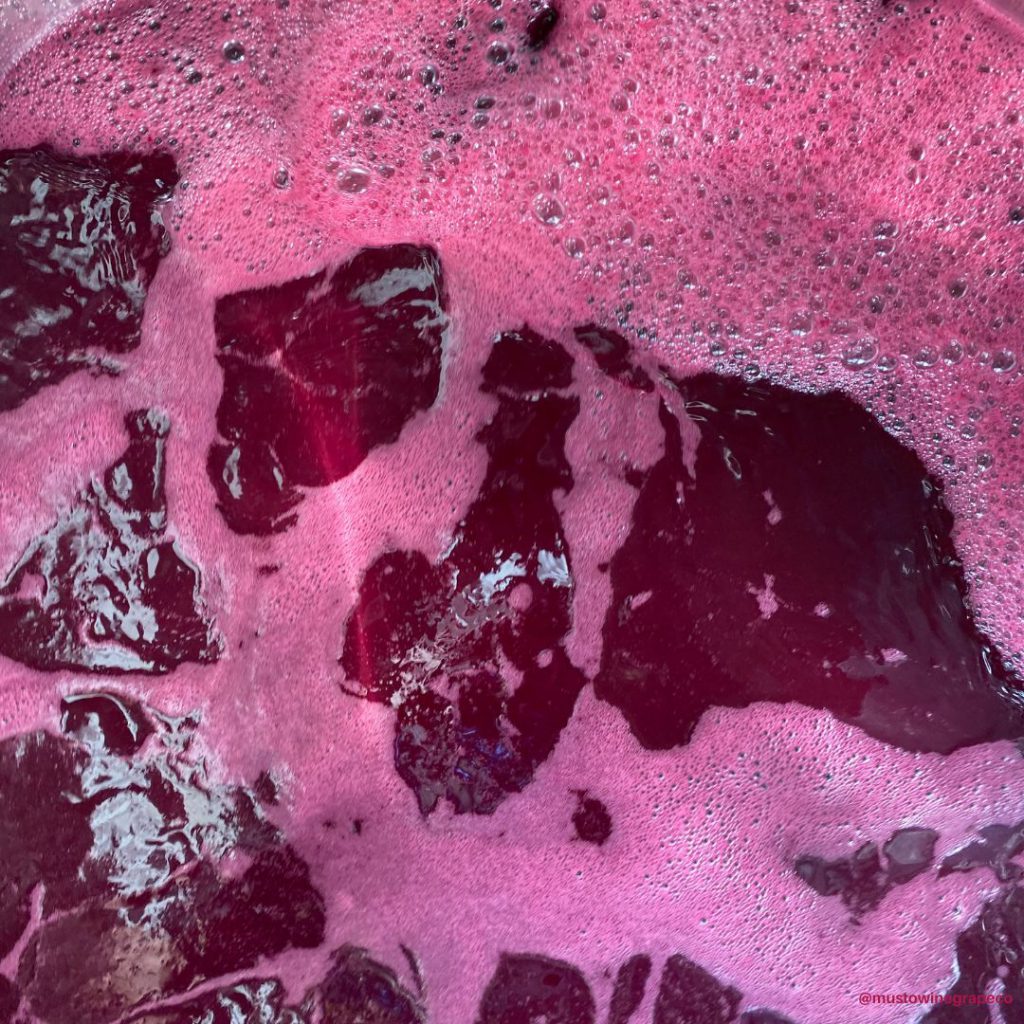
Fresco Juices:
Ever bake a cake from a box and it came out delicious? Did you know you could do the same with winemaking?
Mondiale Fresco is proud to be the only product to offer home winemakers their own vineyard in one unique package. Each pail of juice is pre-balanced and adjusted to ensure you have the best winemaking success possible. Just warm up the juice to fermentation temperature and watch it go.
What does “pre-balanced” and “adjusted” mean?
Every season Mother Nature gives us a different wine grape harvest. Some years the acid, pH, and sugars are all in line with each other. Most times they aren’t and there needs to be some slight adjustments made pre-fermentation to ensure top wine quality. The Fresco juices are adjusted so that the acid, pH, and sugar levels are all in balance with each other. This makes for an easier fermentation and, a very pleasing wine.
Depending on the varietal of wine you choose, enzymes and tannins might be added – all pre-measured, and ready-to-go, just open the packet and add to the pail. These add-ons help with wine clarity and mouthfeel, contributing to the “taste like made from scratch”, or in this case, as if fermented on the skins. The Fresco juices are the best juices to work with for busy winemakers. You get the juice warmed up, watch it ferment, age, and bottle.
Fresh Juices:
Fresh Juices come straight from the press!
Our fresh juices are from the grapes that are crushed, destemmed, and pressed right into the pails. For white wine, this is as if you were crushing and pressing yourself. For red wine the grapes are run through a heat or “hot” press in order to extract the color. Once these pails come up to temperature they can kick off because of the native yeast from the original grapes, or you can kill the native yeast and pitch your own yeast to ensure a more successful fermentation. Either way you are working with the fresh juice, not from concetrate. A delicous wine can be on your table as soon as Christmas!
So what is the difference?
The Fresh Juices are the straight from the press. The Fresco juices are straigth from the press, but pre-balanced and have a few additions made to them to make fermentation easier on the winemaker.
Either way you have delicious wine in the making!
To make an order please contact us via sales@juicegrape.com or call us at 877-812-1137, follow us on Facebook, Instagram, and Youtube, or check out the Harvest Tracker and Winemaker Blog on our website- juicegrape.com.
The Art and Joy of Curing Your Own Green Olives
Green olives, with their vibrant color and unique taste, have been a beloved ingredient in Mediterranean cuisine for centuries. Whether you enjoy them as a topping on your pizza, a flavorful addition to your salad, or as a tasty snack on their own, there’s something undeniably satisfying about their briny and slightly bitter flavor. While you can easily find jars of green olives at your local grocery store, there’s a special satisfaction in curing your own green olives at home. In this blog post, we’ll explore why you should consider taking up this age-old tradition and how to get started on your olive-curing journey.
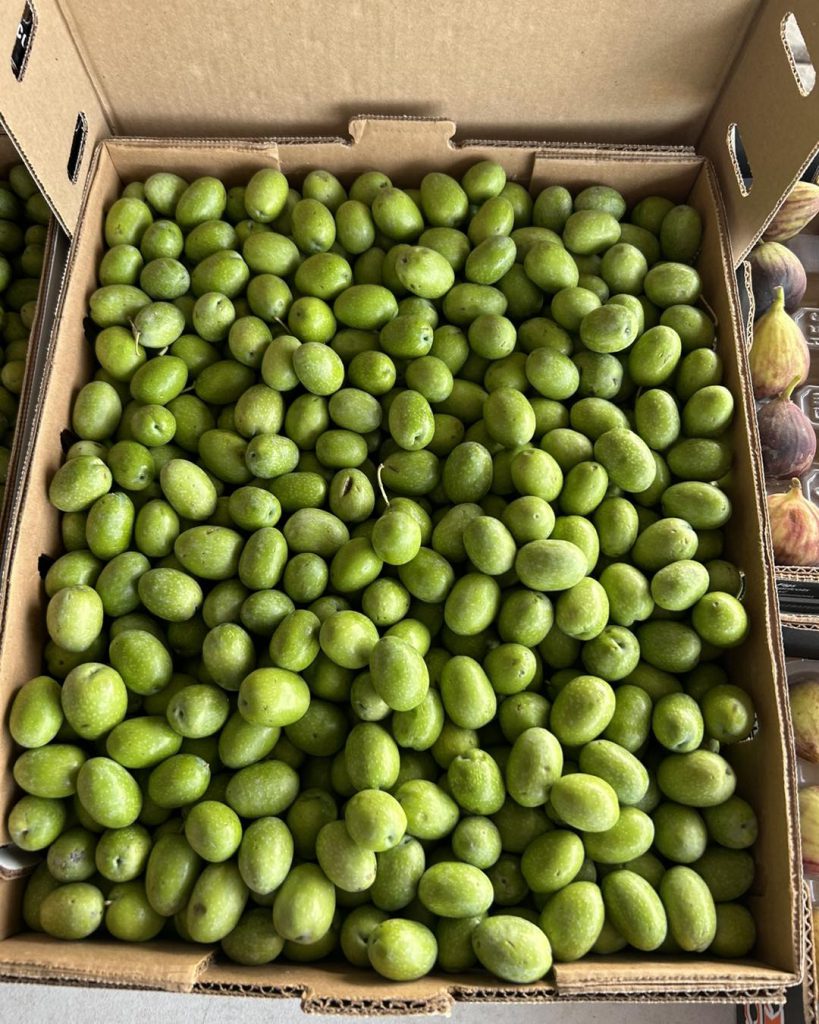
Unmatched Freshness:
One of the primary reasons to cure your own green olives is the unparalleled freshness you’ll achieve. When you buy olives from a store, they have often been processed, pasteurized, and stored for extended periods. This can affect their texture and flavor. However, when you cure your own olives, you have full control over the process, ensuring they are at their peak freshness.
Flavor Customization:
Curing your own olives allows you to experiment with various flavors and seasoning combinations. You can create olives that are perfectly tailored to your palate. Want them spicier? Add chili peppers. Prefer a milder taste? Opt for a simple brine with herbs. The possibilities are endless, and you can adapt the curing process to suit your taste preferences.
Sense of Accomplishment:
There’s an immense sense of accomplishment that comes from curing your own green olives. It’s a centuries-old tradition that connects you to the culinary heritage of the Mediterranean region. As you see your olives transform from raw, bitter fruit to delicious, briny morsels, you’ll gain a deeper appreciation for the art of food preservation.
Control Over Quality:
When you cure your own olives, you have control over the quality of the ingredients you use. You can select the best green olives available and choose high-quality olive oil, salt, and seasonings. This ensures that your final product is of the highest quality and free from any artificial additives or preservatives.
Sustainable and Cost-Effective:
Curing your own olives can also be a sustainable and cost-effective choice. You can source olives locally or even harvest them from your own olive tree if you have one. This reduces the carbon footprint associated with transportation and minimizes packaging waste. Plus, buying olives in bulk can be more economical in the long run.
Getting Started:
Now that you’re convinced of the merits of curing your own green olives, here’s a basic outline of how to get started:
- Choose Your Olives: Musto Wine Grape brings in fresh, firm green olives from California. We have two sizes of green olives, small and large in 16lb cases.
- Prepare a Brine: Create a brine solution by dissolving kosher salt in water. The exact proportions depend on your taste and the olives’ bitterness, but a common ratio is about 1/2 cup of salt per gallon of water.
- Curing Process: Soak your olives in the brine, ensuring they are submerged. This process can take several weeks to several months, depending on the size and bitterness of the olives.
- Flavoring: Experiment with flavorings such as herbs, garlic, lemon peel, or spices during the curing process.
- Storage: Once the olives reach your desired level of flavor and texture, store them in a cool, dark place, typically in jars filled with olive oil.
- Download: Download our favorite recipe by husband and wife winemaking duo Frank & AnnMarie Renaldi. Click the link to download their stpe by step direction –> How to Cure Your Own Olives
Conclusion:
Curing your own green olives is not only a rewarding culinary adventure but also a way to connect with tradition, savor unmatched freshness, and customize flavors to your liking. So, why not embark on this journey and experience the joy of curing your own green olives? It’s a delicious and satisfying endeavor that will elevate your appreciation for this Mediterranean gem.
Upgrade Your Winemaking Juice with the AllGrape Pack!
Upgrade Your Winemaking Juice with the AllGrape Pack!
Making from Fresh Juice or Wine Kits produces a fantastic wine, but can sometimes be lacking in tannins, color, flavor, and mouthfeel. This isn’t the winemaker’s fault, this is becasue these types of product do not get ample time on the grape skins to give the wine that extra kick of complexity.
Lucky for you, We Have a Solution! Enter the AllGrape Pack
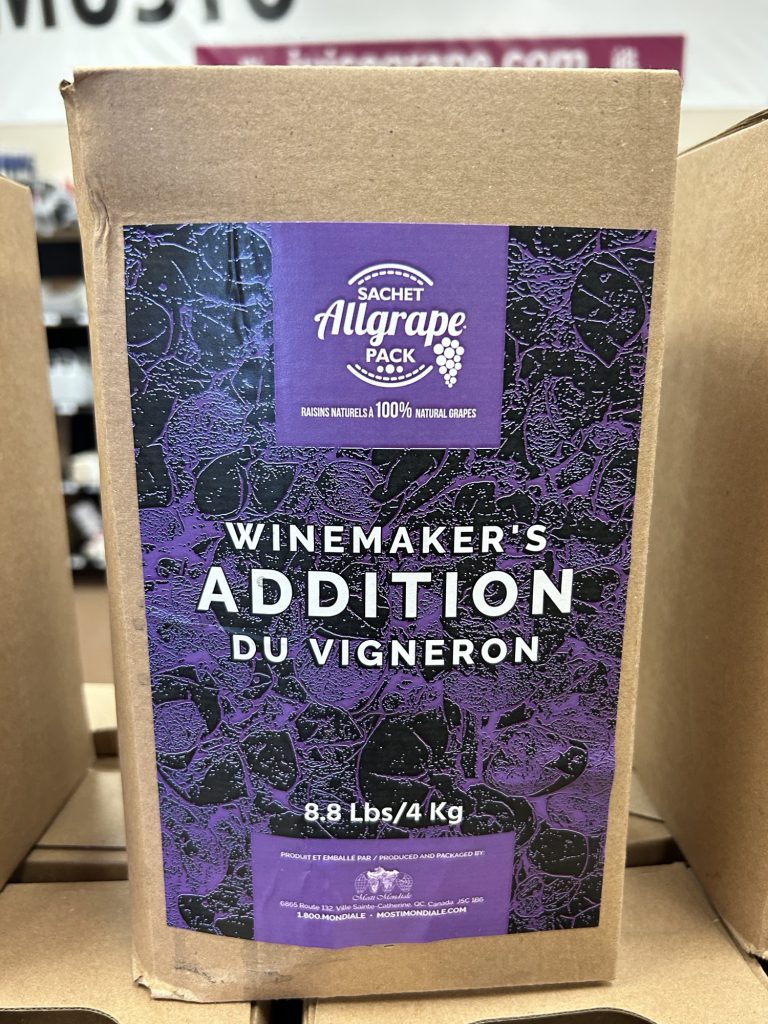
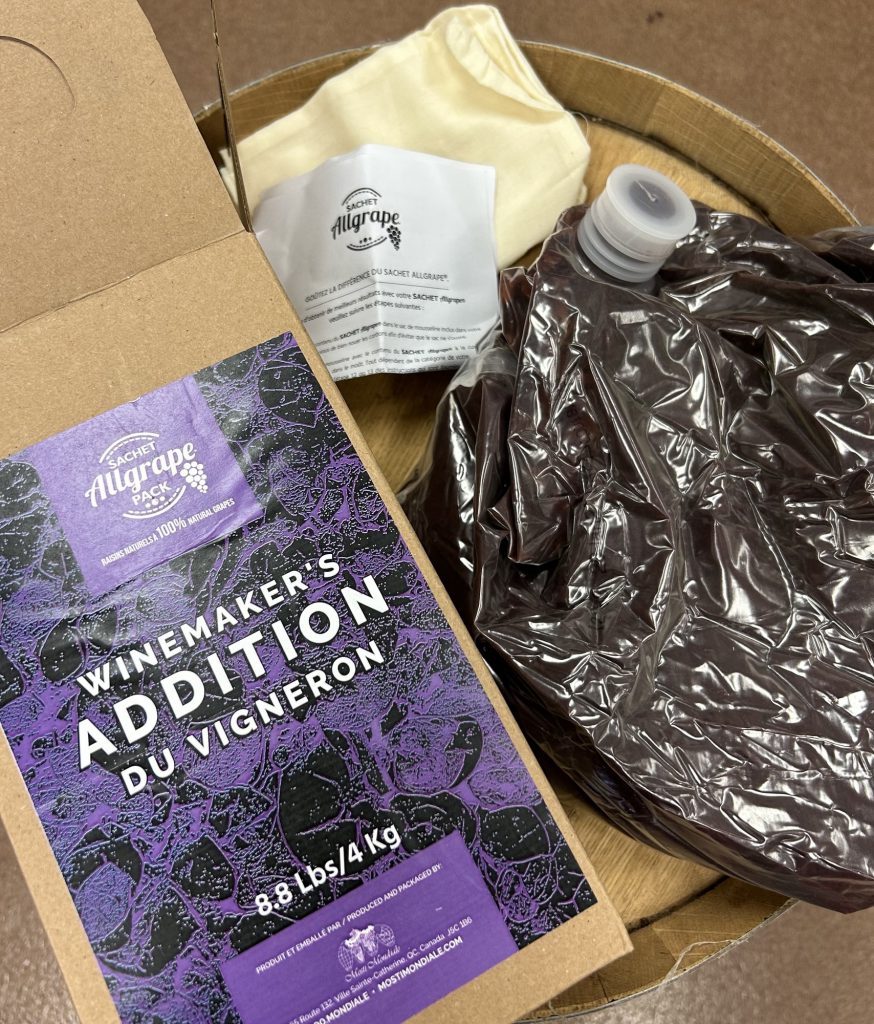






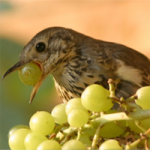
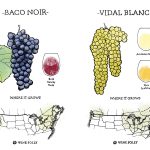
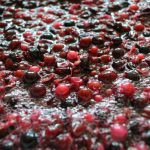
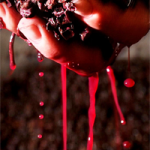
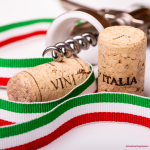

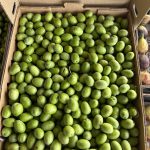
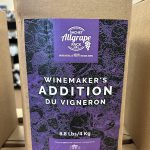
Recent Comments